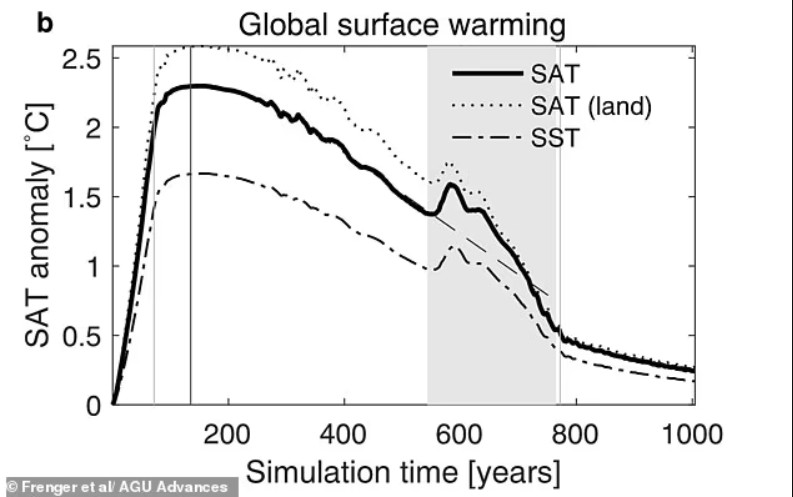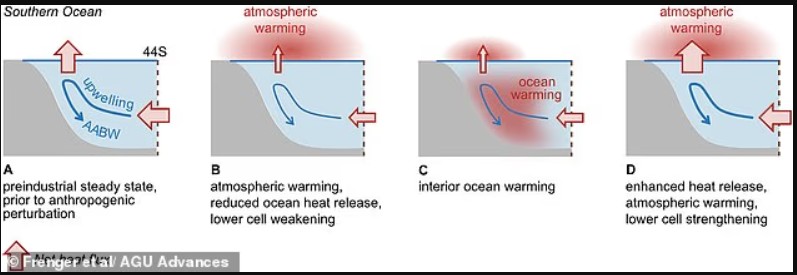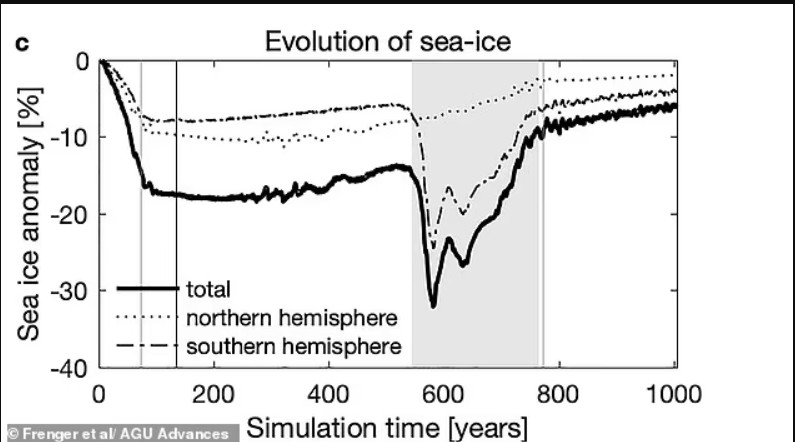
mystery

Express newspaper
27/10/2025 19:48
The Southern Ocean has been a major ally in the fight against climate change for about 200 years, absorbing carbon dioxide that damages the environment.
But scientists warn that this ocean around Antarctica is accumulating a colossal “elbow” - a sudden release of heat - that could raise global temperatures and destroy decades of progress in curbing global warming.
This phenomenon is not a Homer Simpson-like stutter; it is a sudden release of heat, which can last for decades. Deep water currents rise to the surface, taking heat accumulated over centuries and carryin…

mystery

Express newspaper
27/10/2025 19:48
The Southern Ocean has been a major ally in the fight against climate change for about 200 years, absorbing carbon dioxide that damages the environment.
But scientists warn that this ocean around Antarctica is accumulating a colossal “elbow” - a sudden release of heat - that could raise global temperatures and destroy decades of progress in curbing global warming.
This phenomenon is not a Homer Simpson-like stutter; it is a sudden release of heat, which can last for decades. Deep water currents rise to the surface, taking heat accumulated over centuries and carrying it into the atmosphere, causing temperatures to rise, glaciers to melt, and sea levels to rise.

How the “ocean elbow” works
Scientists from the GEOMAR Helmholtz Centre for Ocean Research in Kiel, Germany, used climate models to predict the effects. They found that:
After hundreds of years of net-negative emissions and gradual global cooling, the sudden release of heat from the ocean could raise the average global surface temperature by several tenths of a degree, for more than a century.
This heat accumulated in the Southern Ocean will rise to the surface through deep convection, causing an increase in global warming.
Models predict that about 200 years from now, global warming will peak at 2.25°C above pre-industrial levels, then fall below 1.5°C by the year 2600. But after the Southern Ocean “elbow,” warming will increase again to about 1.7°C.
The greatest impact will be felt in the Southern Hemisphere, particularly endangering the most vulnerable countries of the global South.
Why is this worrying?
The Southern Ocean makes up about 15% of the total ocean surface area, but absorbs almost all of the global heat stored by the oceans.
Extreme warming threatens ecosystems, especially Antarctic krill, a key component of the food chain. Krill are moving further south into colder waters, changing the distribution of large mammals like penguins and whales.
Antarctic glaciers hold 70% of the world’s fresh water. If they all melted, sea levels would rise by about 56 meters, with catastrophic global consequences.


Even small losses of ice can affect ocean currents and wind systems, affecting the climate in the Southern Hemisphere.
Factors affecting melting
El Niño and La Niña change Pacific temperatures, causing melting and snowfall in Antarctica.
Recently, it has been discovered that a giant glacier the size of France is floating above the ocean more than previously thought, increasing the risk of faster melting and rising sea levels.
Scientists warn that the Southern Ocean Elbow could undo efforts to stabilize the climate, showing that global warming depends not only on current emissions but also on heat stored in the oceans.
In essence, the Southern Ocean is not just a “heat store” - it could become an unexpected source of global warming, with dramatic consequences for decades and centuries. /GazetaExpress/